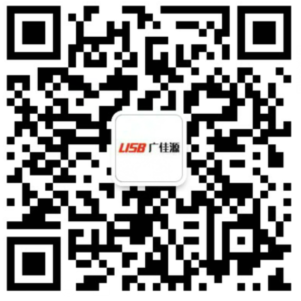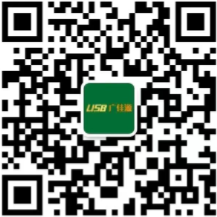 Mr. Chen:136-6225-2835
Mr. Chen:136-6225-2835
 Miss Chen:189-2385-0895
Miss Chen:189-2385-0895
Shenzhen Guangjiayuan Electronic Technology Co., Ltd
Mr. Chen: 136-6225-2835 (same WeChat account)
QQ: 979285705
Miss Chen: 189-2385-0895 (same WeChat account)
QQ: 2391552662
Chen Weiting :135-3824-4786 (same WeChat account)
Chen Weihao: 139-2459-4393 (same WeChat account)
Tel: 86-0755-33182327
Email: gjydz88@163.com
Website: www.usb-type.com
Address: Building 10, Hongxing Gebu Qixiang, Songgang Town, Bao'an District, Shenzhen, Guangdong Province
A USB data line is nothing more than a line with two heads, which may seem simple, but it is not as simple as imagined. A small data line hides a lot of knowledge that you may not know, and the emergence of USB type-c demonstrates that you cannot underestimate it.
The forward and backward pluggable USB type-c connectors can reduce the hassle of plugging in USB devices. USB type-c also supports technologies such as the USB3.1 specification with data rates up to 10Gbit/s, power output up to 100W, audio multiplexing, and switching modes that can handle video signals such as DisplayPort or MHL.
Therefore, it is not surprising that hundreds of suppliers are launching products that support USB type-C. In fact, over a hundred suppliers from various fields, from connecting cables to laptops, participated in the first USB type-C interconnect interoperability test held in July 2015 to test the interoperability of their products and prototypes.
Although the industry has been dealing with USB for decades, implementing Type-C connectivity still brings many new challenges. For example, when operating at a data rate of 10Gbit/s, the voltage swing on the data line is less than 0.5V. The designer needs to implement an equalizer in the physical layer (PHY) connecting the receiving end to obtain the input signal. At this time, the "eyes" in the signal eye diagram are basically closed, and necessary equalization needs to be implemented to open the "eyes" in the signal eye diagram. At the same time, the displayed signal represents logic 0 or logic 1.
There are still many other challenges in implementing type-c connections, especially when the USB 3.1 specification operates at a full data rate of 10Gbit/s.

Introduction to USB type-c:
1. The ultra-thin and thinner body requires thinner ports, which is also one of the reasons why USB C emerged. The USB C port is 0.83 centimeters long and 0.26 centimeters wide. The old-fashioned USB port is already outdated, with a length of 1.4 centimeters and a width of 0.65 centimeters. This also means that the end of the USB C data cable will be one-third the size of the standard USB A data cable plug.
2. Similar to Apple's Lightning interface, the front and back of the USB C port are the same. That is to say, no matter how you insert this port, it is correct. Users do not need to worry about the pros and cons of traditional USB ports.
3. In theory, the maximum transmission rate of the USB C port is 10Gb/s. However, Apple stated that the new MacBook's USB C port has a maximum transfer rate of 5Gbps. The maximum output voltage is 20 volts, which can accelerate charging time. The USB A model, so far, has a maximum transmission rate of 5Gbps and an output voltage of 5V.
The USB C port of the versatile new MacBook can transmit data, charge, and also serve as a video output port to connect external display devices. The only question is how Apple can satisfy users who want to do all three things simultaneously.
5. Unlike the old USB port, the bidirectional USB type-C can only transmit power in one direction. The power transmission of the USB C-type port is bidirectional, which means it can have two transmission power modes. So, users can not only charge their mobile devices with their laptops, but also use other devices or mobile power sources to charge their laptops.
6. Backward compatible USB C can be compatible with old USB standards, but users need to purchase additional adapters to complete compatibility. Apple stated that not only will Apple officially sell adapters, but third-party companies can also authorize production.
What other issues need to be noted when developing USB type-c
For example, the forward and backward pluggable characteristics of connectors require reconstruction of the physical layer in implementation. When running at the usb 2.0 data rate, the designer can use a pair of resistors to short circuit the two Datapath that enter the physical layer, so as to indicate how the connector is inserted. At the lower usb 2.0 data rate, the physical layer has enough performance margin to deal with the reflection caused by the short Datapath.
For usb 3.0 and usb 3.1 data rates, designers need to implement two Datapath to handle higher rates. Through the connector in one direction, the system is connected to a Datapath, while in the other direction, the system is connected to another Datapath. Dual Datapath are necessary because when transmitting at 5Gbit/s and 10Gbit/s data rates, shorting the Datapath to clarify the direction will cause too many signal reflections, which will cause data decomposition.
Designers need to decide how to solve this problem. One solution is to use two physical layers, one in each direction. The disadvantage of the dual physical layer solution is that it will occupy 20% to 25% of the additional area to realize two Super Speed Datapath and two Hi Speed Datapath, and it requires two sets of phase locked loop (PLL) circuits and two sets of power, ground and data pins. The final result is that a system has one more High Speed Datapath than it actually needs.
A more efficient implementation method is to use a physical layer that has been optimized for the usb type-c specification. It has two SuperSpeed Datapath, a Hi Speed Datapath, a set of phase-locked loop circuits, and a set of power, ground, and data pins.
The implementation method chosen by designers depends on their final application. Cost sensitive markets will choose to save area and chips by eliminating an additional Hi Speed Datapath and reducing the number of pins by up to 40%.
Contact person:
Mr. Chen 136-6225-2835 (same WeChat account)
Miss Chen 189-2385-0895 (same WeChat account)
Chen Weiting 135-3824-4786 (same WeChat account)
Chen Weihao 139-2459-4393 (same WeChat account)
Address:
Building 10, Hongxing Gebu Qixiang, Songgang Town, Bao'an District, Shenzhen, Guangdong Province
 |
 |
| Technology 1 | Technology 2 |